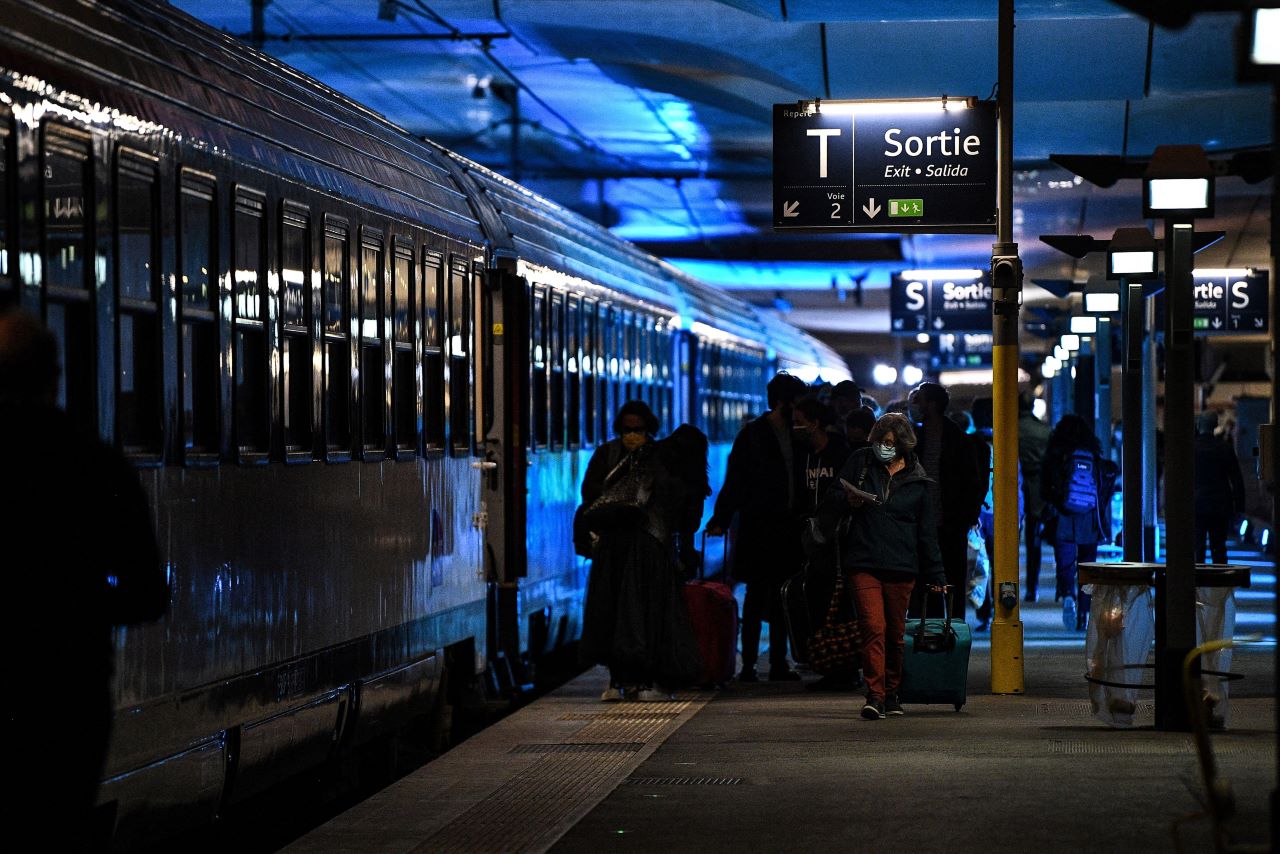
French Prime Minister Jean Castex boarded the Paris-Nice night train for its inaugural trip on 20 May, leaving Paris’s Gare d’Austerlitz at 20:52 and arriving in Nice 12 hours later at 09:06. Initially scheduled for 16 April, the inauguration was delayed as a result of France entering its second Covid-19 lockdown.
“This launch should highlight a virtuous transport mode which contributes to the opening up of territories,” a member of the prime minister’s entourage told French news agency AFP. “Nice is ultra-connected for the upper classes but less so for students and others.”

Discover B2B Marketing That Performs
Combine business intelligence and editorial excellence to reach engaged professionals across 36 leading media platforms.
The Paris-Nice night train is the heir to the legendary Le Train Bleu, which carried the international jet set to the French Riviera in the early 1900s.
“This first night train is a strong symbol, which signifies the rebirth of this mode of transport that some considered obsolete,” said Jean-Pierre Farandou, CEO of French national railway company SNCF.
The train of the rich and famous
Originally launched in 1886, Le Train Bleu was one of the world’s first night trains, reaching the status of icon in the first two decades of the 20th century.

US Tariffs are shifting - will you react or anticipate?
Don’t let policy changes catch you off guard. Stay proactive with real-time data and expert analysis.
By GlobalDataStarting in Calais and ending in Menton, Le Train Bleu – which got its name from the blue and gold colour of its sleeping cars – connected the north of France with the French Riviera, transporting the era’s international rich and famous.
Celebrity Train Bleu guests included Coco Chanel, Marlene Dietrich, Jean Cocteau and Agatha Christie, who set one of her novels – The Mystery of the Blue Train – aboard it.
As reported by France24, the train was a symbol of extreme luxury, as passengers could taste a five-course meal before going to sleep in oak-panelled cars with personal attendants present to satisfy passengers’ every whim.
To open up its services to the less well-off, Le Train Bleu added second third-class coaches to its service in the early 1930s, stopping during WW2 and eventually restarting services in 1946.
In the early 1950s, some of the carriages were converted into a saloon bar, which became a favourite amongst Train Bleu aficionados.
From the 1980s, luxury night trains were replaced by TGV services, which cut down travel times significantly. Le Train Bleu ceased to exist in 2003 when SNCF renamed it Service Nuit.
Four-year hiatus
In 2016 the French Government decided to cancel night train services, leaving only two routes – Paris to the Pyrenees and Paris to the Alps – and discontinuing the Paris-Nice night train in 2017.
The decision was based on the fact that night trains were not making enough revenue as customers were choosing quicker ways to travel around the country such as high-speed trains and planes.
According to the French financial newspaper Les Echos, €100 of public subsidies went into each night train ticket that was purchased, amounting to 25% of total losses experienced by non-high-speed rail.
As a result of different factors, including the Covid-19 pandemic and demands for more environmentally friendly travel at the EU level, in 2020 French President Emmanuel Macron announced the government’s decision to restart night train services.
“We are reopening this evening things that we had perhaps a little too quickly sacrificed,” said Castex when he boarded the train in May.
The French Government has allotted €100m to restart night train operations, of which €40m will go to renovations of the Paris-Nice night train including providing Wi-Fi connection.
To make it more attractive to customers, prices will vary between €19 and €39 for a reclining seat or a second or first-class berth. Due to Covid-19 restrictions, only four people will be able to sleep in each berth.
Ten more night trains before 2030
The Paris-Nice night train will not be the only one to restart, as the French Government is planning to restart several more routes before 2030.
“My ambition [is for] ten night trains in 2030 organised around four major corridors: Bordeaux to Marseille, Dijon to Marseille, Tours to Lyon via Ile-de-France and Paris to Toulouse,” said Transport Minister Jean-Baptiste Djebbari.
The revitalisation of night train routes will not be restricted to France only but will include other European destinations. By the end of the year, services on the Vienna-Monaco-Paris route are set to begin, while the Paris-Berlin night train will be available from 2023.
France is not the first European country to choose a more environmentally conscious approach to transport. Austria banned short-haul flights in November 2020, replacing them with railway services as part of the AIRail project – a partnership between Austrian Airlines and the Austrian Federal Railways.
“After Linz and Salzburg, we are now providing another region, namely Graz, with the attractive AIRail offer that guarantees a safe and environmentally friendly journey to the airport including an assured connecting service”, Andreas Matthä, CEO of the Austrian Federal Railways told Airport Technology.
France is also taking inspiration from the way the Austrian Federal Railways has implemented a network of night trains in a “socio-cultural context favourable to the environment and action against climate change”.



